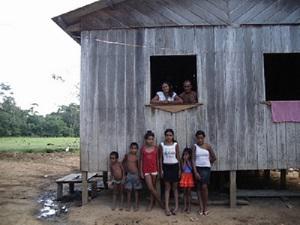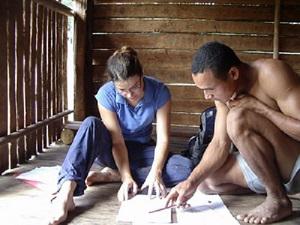Vanessa Sequeira
The principal objective of the proposed research project is to assess the compatibility of conservation-oriented forest use and local livelihood security against a backdrop of increased deforestation.

Typical household.
Can people really make a living from the forest whilst conserving it, or is there a cost in terms of human welfare and/or conservation of the forest? This is a particularly complex question in the context of the Amazon rainforest, where perceived values differ according to the interests of each particular stakeholder. If conservation policies and strategies are to be successful, it is fundamental to address the divergent goals of different stakeholders and identify viable solutions to minimize trade-offs between environmental conservation and socio-economic development. These solutions are urgently needed given the annual loss of forest cover of about 18,000 km² in the Brazilian Amazon alone, and where 16% of the original forest cover has been lost over the past decades, threatening both biodiversity conservation and the livelihoods of forest-dwelling people.

Conducting the household interview.
The study will determine the impact of forest dwellers' livelihoods on the forest resources by focusing on case studies from forest frontier areas in Acre, the westernmost state of the Brazilian Amazon. Specific objectives are:
1) to identify how households achieve livelihood security through forest-based production systems, and determine the extent to which income is generated through forest resources;
2) to determine the impact of livelihood activities on forest conservation;
3) to determine actual and potential trade-offs between livelihood security and forest conservation, and identify ways to minimize them. The fieldwork will principally consist of household level interviews of forest dwellers, complemented with remote sensing techniques.
Information will be collected relating to indicator variables which will subsequently be analysed both qualitatively and quantitatively. It is aimed to conduct at least 200 household interviews within the study areas over the period of a year.